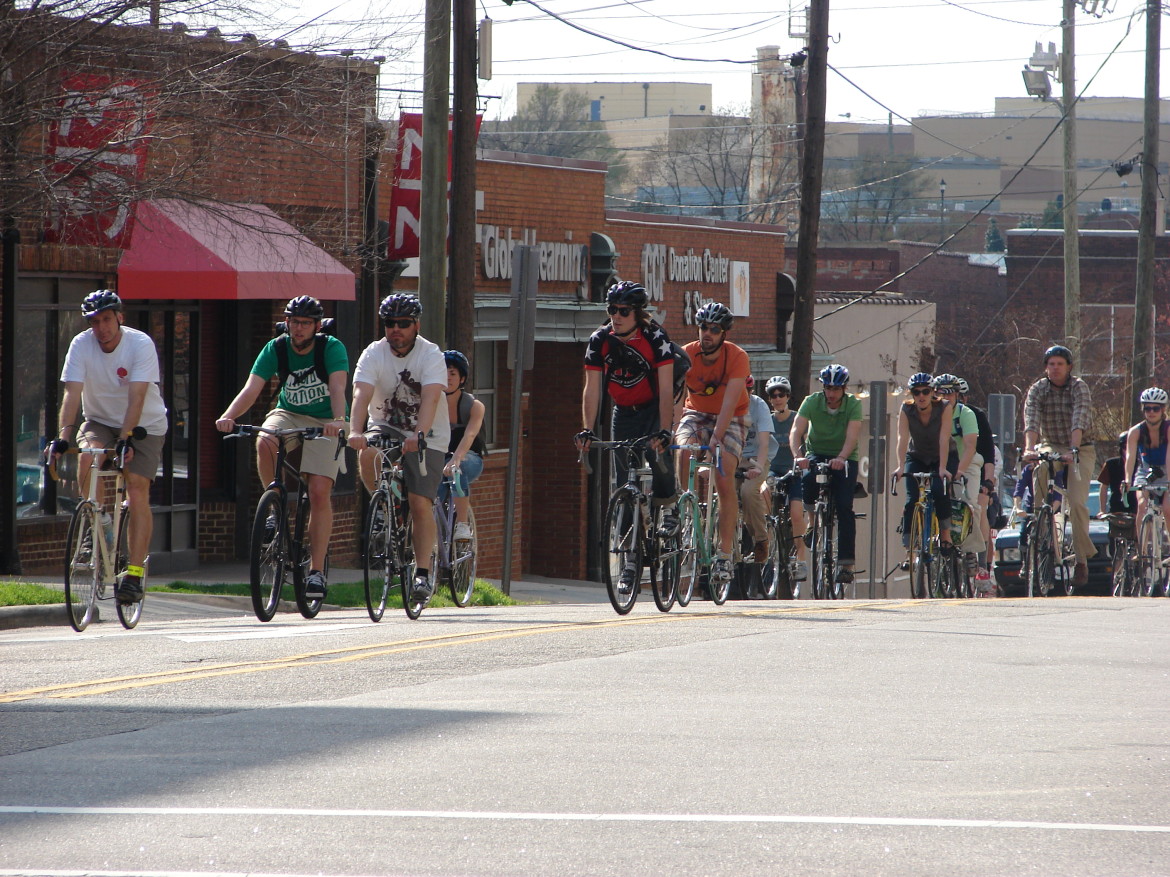Discussions are once again taking place among residents, council members and cyclists about bike lanes on Hillsborough Street, except this time between Woodburn Road and Park Avenue.
No matter what happens, the current four-lane strip of Hillsborough will look different. The debate now before a council committee is: should there be parking on both sides of the street or parking on one side and bike lanes on both sides? Either way, there will only be one travel lane on each side.
The city is planning to hire a contractor to resurface the stretch of street and re-striping is part of that process.
The Comprehensive Planning Committee had considered eight options for the resurfacing and restriping project, though not all the options included bike lanes. At its Feb. 7 meeting, council members asked city staff to review the options — which came about after a public hearing and city discussions — and bring its suggestions to its Wednesday, March 14 meeting.
But because of time restraints, the committee delayed its final decision to a special meeting next Monday, March 19 at 3 p.m. The decision will go to the full council for a final vote Tuesday.
Raleigh cyclists gathered together and rode from the Bell Tower at N.C. State University to the City Council Chambers Wednesday afternoon before the committee met to discuss the issue. The cyclists, who called their group “Ride on Raleigh,” advocated in their press release for the adoption of the National Association of City Transportation Officials’ (NATCO) Urban Bikeway Design Guide. The group held a press conference in Nash Square before the meeting began.

“So much of our city continues to be dedicated to more cars, more travel lanes and more parking and that has a significant impact on the quality of life,” said Timur Ender, one of the group’s organizers. “It has an impact on the air we breathe and on the amount of space left for affordable housing and parks in the city.”
Ender said the bike advocacy group does not believe that parked cars are more important than moving bicycles on Hillsborough Street.
“We want people to feel safe when they ride. This is for the common good; this is for everyone,” he said.
Eric Lamb, the city’s planning and development manager, presented the transportation staff’s two recommendations for the council members.
Option two includes on-street parking on both sides and sharrows, which are markings on the street to remind cars to share the road. Option three features on-street parking on one side and bike lanes on both.

“When we developed the 2009 Comprehensive Bicycle Plan, the importance of Hillsborough Street quickly became very evident,” he said.
The Cameron Park Neighborhood Association advocated for on-street parking on both sides and sharrows. Cyclists who spoke to council members and staff recommended the other option: on-street parking on one side and bicycle lanes.

In addition to those options, Councilman Russ Stephenson proposed a “hybrid option” that he and Councilman Thomas Crowder produced.
“If we just back up from the design we picked and focus on what [the cyclists and neighborhood’s] top concerns are, what they’re trying to accomplish here … we can put those together and see if there’s another option,” Stephenson said.
The hybrid proposal is to install left-turn pockets at the intersections along the street, rather than a continuous two-way left turn lane, with parking on both sides of the street in some areas and not in areas where there would be short center-turn lanes.
“It’s a non-standard solution from a transportation engineer standpoint, but it still makes common sense,” he said.
But Lamb said after evaluating this option, the staff didn’t think that kind of turn lane design would work.
“The problem with that then becomes one addressing the frequency of turns, both at the public street intersections and at the driveways along this section, relative to traffic flows along the street,” Lamb said.
He also said it would cause a problem with pedestrian safety because a three-lane section would create the best pedestrian refuges in median islands along the corridor.
Lamb said committee members needed to decide during Monday’s committee meeting so the bidding for the resurfacing work can begin.
